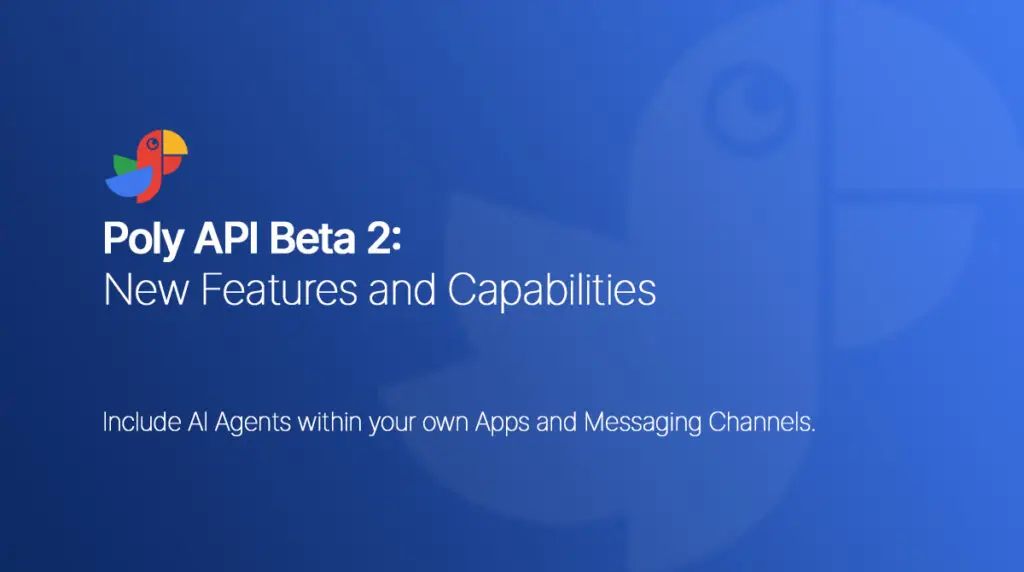The recent Beta 2 release of Poly API has ushered in an era of innovative features that promise to reshape how businesses integrate AI models into their systems. Today, we dive deep into these new capabilities and the endless possibilities they bring with them.
Embed AI models via Poly API
The new capabilities in the Beta 2 release introduce a seamless method to integrate AI models through the Poly API. This groundbreaking feature facilitates the embedding of models into proprietary applications. Whether it’s to establish communication channels with customers, partners and employees, this feature promises to bridge the gap effectively. Beyond its primary function, it paves the way for enhanced user experiences, offering businesses a competitive edge. This integration is a monumental stride forward in an era where real-time interactions are paramount.
Use Cases
One of the exciting demonstrations of this capability was using the ChatGPT plugins against the function model. This model can subsequently act on custom functions inside Poly and then use API functions to interact with actual enterprise systems.
The primary emphasis, however, is on the capability to design custom applications directly through Poly. This function simplifies the integration process, as it’s already trained to use the Poly API. This game-changer capability allows developers to connect services like Twilio for SMS or platforms like Facebook Messenger and Instagram. The objective is to build webhook handlers to capture those events and trigger custom functions.
For instance, one such function is specifically tailored to handle customer communications via SMS. This function utilizes the OpenAI plugin model, processes the response, and then sends it back as an SMS.
AI Assistant
The journey begins with the AI assistant atop training functions to develop new custom functions. Once these custom functions are deployed on a Poly server, creating a plugin remains relatively unchanged.
The significant advancement in Beta 2 is the introduction of a Plugin API URL. This feature allows developers to access the API and engage with the plugin model directly, simulating the experience one would have with OpenAI or ChatGPT.
However, the absence of conversation history is a notable limitation in the current release. But there’s good news! Poly has plans to incorporate a conversation history feature in the upcoming release, enabling a continuous dialogue with the AI agent without losing context between interactions.
Practical Application
One of the use case demonstrations showed a simple application that presented a user interface. This application captures the user’s message as an event and then uses the pre-trained Poly function. With minimum coding effort, businesses can now embed an AI into their application capable of serving users in nearly any language.
The Beta 2 release also integrates smoothly with messaging platforms. A practical demonstration with SMS showcased how easily the system responds to user queries and even processes transactions. The beauty is in the flexibility— it works seamlessly using English, Spanish, or any other language.
Get Involved
The Beta 2 release of Poly API marks a significant advancement in business AI integration. Powered by your own public and private APIs, it allows you to embed AI models in applications, utilize them across various messaging platforms, and conduct transactions, making the potential limitless.
If this piqued your interest and you’d like to dive deeper into what Poly API offers, don’t hesitate to get in touch. The future of AI integration is here, and it’s thrilling!
